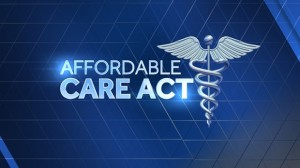Update for 2018: Please see “2018: The year for a Health Reimbursement Arrangement (HRA)”
Update December 10, 2017: I published an annotated copy of IRS proposed regulations for Qualified Small Employer Health Reimbursement Arrangements (QSEHRAs) that should be followed with 2018 QSEHRAs. It makes sense to view this as an additional option and not a replacement of the traditional HRAs discussed below.
Update January 30, 2017: New Health Reimbursement Arrangements are available to qualifying small businesses.
Update December 30, 2016 – If your small business reimburses employee health care costs, you need to be aware that tax laws have changed effective July 2015 and again in December 2016 and there may be actions necessary right now to amend your reimbursement arrangement and avoid potentially severe tax liabilities as a result of the Affordable Care Act (ACA). The IRS issued a series of rules and notices from 2013 to 2016 that detail the new tax rules.
HRAs must properly incorporate primary health insurance or risk substantial tax penalty. This following expanded list of 20 items may help small business employers and their tax advisers gain a better understanding of the new excise tax rules and how to avoid them.
Please note that if you are operating a company with one participant in the health plan or where husband and wife are the only health plan participants, many of these 20 items do not apply. Please read the note at the end of the article first.

1. The federal government considers your informal employee health care payment arrangement to be subject to the extensive legal requirements of a “group health plan” (even if you did not intend it so or think of it that way). The legal requirements include exposure under the requirements of the Employee Retirement Income Security Act of 1974 for employee welfare benefit plans.
2. To avoid taxes and legal liabilities, the HRA must either be integrated with an employer-provided ACA-compliant group health insurance plan or must comply with the provisions of Section 18001 of the 21st Century Cures Act. The latter are sometimes referred to as QSEHRAs that are not the primary focus of this article.
3. The HRA must be in writing unless you are reimbursing insurance costs only.
4. Employers who do not offer group health insurance may now reimburse the cost of individual health insurance or out-of-pocket medical expenses.
5. Where an employee is covered by their spouse’s plan, employers may not reimburse the cost of the spousal coverage.
6. The HRA may cover employees who are not covered by the employer’s group insurance plan, including the spouse or dependents who are not on the group health insurance.
7. For purposes of determining whether a violation of ACA market reforms has occurred, it does not matter whether the reimbursements were made on a pre-tax or after tax basis.
8. Taxation of health benefits to the employee is a separate issue from the applicability of excise taxes on the employer. The normal treatment is to exclude the benefit from employee income but the benefit would be taxable compensation in some cases where the employee does not maintain minimum essential coverage. This article does not cover taxation of benefits under an HRA.
9. Employers who give taxable compensation bonuses may make reference to employee health care costs if that is the purpose of the bonus arrangement.
10. The minimum statutory tax penalty for unintentional violation of ACA market reform law not modified by the 21st Century Cures Act is 10% of the amount the employer paid. The maximum amount of penalty is $100 per employee per day of violation, plus (if applicable) wage taxes plus (if applicable) interest and penalties.
11. Stand-alone HRAs may reimburse up to $4,950 for an eligible employee and $10,000 for an employee with family coverage.
12. If an employees is not covered for the entire year, the limitations are prorated.
13. A HRA must be communicated to employees separately from the insurance plan.
14. Employees may not contribute to a HRA. All contributions must be employer paid.
15. HRAs are effective in expanding coverage at a higher overall cost. HRAs are not effective in reducing the overall cost of employee health benefits. In fact HRAs may someday trigger the “Cadillac tax” provisions for rich health benefits in the future because they increase the total health benefits for employees (unless this tax s repealed as expected).
16. Improper reimbursements trigger severe excise penalties under section 4980D of the Internal Revenue Code. This penalty is $100/day excise tax per applicable employee (which is $36,500 per year, per employee). Smaller penalties may apply if the violation was not due to willful neglect. The penalties must be self-reported beginning in 2014 yet many employers may not even realize that they are in violation so the likelihood of interest and late payment penalties further compounds the problem.
17. If the employer is subject to the smaller 10% excise penalty for one year and then still does not correct the HRA plan for 2016, there would likely be a greater likelihood that the higher severe penalty would be assessed for the same repeat violation in the second year.
18. Employers that had a medical reimbursement plan prior to July 1, 2015 and have not updated their plan this year may unknowingly be subject to the excise tax. Apparently there are many small firms that don’t even know about this problem).
19. Employers affected penalties in #16 above should act as quickly as possible to terminate or amend their HRA plan and make appropriate payroll tax adjustments if necessary to avoid additional lateness tax penalties.
20. Excise tax penalties under IRC 4980D are self-reported on IRS Form 8928. The first small business penalty taxes were payable March 16, 2016 by corporate filers on violations occurring from July to December 2015. Apparently the first IRS audits of these employers subject to penalties are underway in late 2017.
The good news: For most small businesses, it is easy and inexpensive to get experienced professional help with the setup and documentation of a self-administered HRA. I’ve acted as adviser to help set up or amend these benefits for dozens of small businesses and nonprofit organizations across the U.S. since the 1980s. In many cases the work can be accomplished as a flat fee concierge advisory service. I can provide sample HRA plan documents to qualifying businesses but you may wish to have an attorney review them; I cannot provide legal services.
Disclosure and clarification
The advice in this article is simplified for the purpose of clear communication regarding most small businesses. As with most aspects of tax and benefit law, there are special circumstances that may not be addressed in this general information. This article ignores the possibility of uninsured ACA-compliant health plans or grandfathered health plans simply because these are not common.
*Many of these points do not apply to one participant health plans or small C corporations. A husband and wife C corporation might be operated as a two employee company for other purposes but the HRA could be designed as a one person health benefit plan with dependent (the other employee/spouse) coverage. Then, as a one person health plan the HRA would be exempt from classification as an employer-provided health plan as discussed in IRS Notice 2015-17 that clarifies Code § 9831(a)(2) provides that the market reforms do not apply to a group health plan that has fewer than two participants who are current employees on the first day of the plan year. Accordingly, an arrangement covering only a single employee (whether or not a shareholder-employee) generally is not subject to the market reforms whether or not such a reimbursement arrangement otherwise constitutes a group health plan. In the case, the “old rules” apply and the HRA could be operated in the same manner as before ACA. It is still important that the plan documents support the fact pattern presumed in this discussion.
The term “health insurance” in this discussion refers to primary ACA-compliant major medical insurance also known as “minimal essential coverage”.
References
26 U.S.C. 4980D Failure to meet certain group health plan requirements
29 CFR 2510.3-1(j) http://www.gpo.gov/fdsys/pkg/CFR-2010-title29-vol9/pdf/CFR-2010-title29-vol9-sec2510-3-1.pdf
IRS Notice 2013-54 http://www.irs.gov/pub/irs-drop/n-13-54.pdf
IRS Notice 2015-87 https://www.irs.gov/pub/irs-drop/n-15-87.pdf
IRS Notice 2016-4 https://www.irs.gov/pub/irs-drop/n-16-04.pdf
Application of Affordable Care Act Provisions to Certain Healthcare Arrangements https://www.cms.gov/CCIIO/Resources/Regulations-and-Guidance/Downloads/cms-hra-notice-9-16-2013.pdf
US Department of Labor, FAQs about Affordable Care Act Implementation (Part XXII) http://www.dol.gov/ebsa/faqs/faq-aca22.html
“Why ACA Employer Mandate Rules Need More Guidance” by Alden Bianchi in Employee Benefit News, 12/25/2014.
TD 9705: Minimum Essential Coverage and Other Rules Regarding the Shared Responsibility Payment for Individuals, 11/26/2014 (How employer contributions to HRAs affect calculation of affordability and exemption from individual mandate penalty) https://s3.amazonaws.com/public-inspection.federalregister.gov/2014-27998.pdf
Related topics:
The changing role of small business HRAs
Small business health plan compliance checklist


Leave a Reply